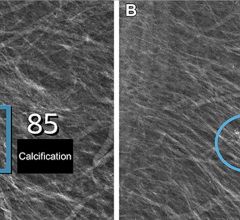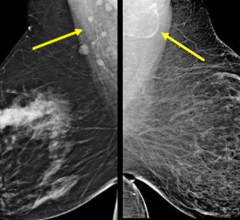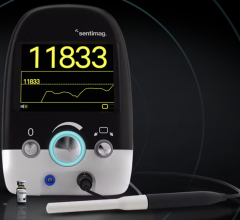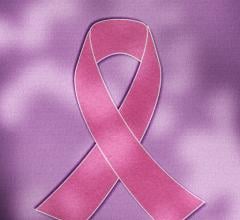September 4, 2008 – In the largest-ever study to compare molecular breast imaging (MBI) to mammography, researchers have shown that MBI can detect three times as many cancers in women who have dense breast patterns on their mammogram and are at increased risk of breast cancer.
According to study results are being presented this week at the American Society of Clinical Oncology’s 2008 Breast Cancer Symposium in Washington, D.C., a radioactive tracer used to detect cancer inside dense breasts, when compared to mammograms, revealed more tumors and giving fewer false alarms, doctors reported Wednesday.
The study, funded by Susan G. Komen for the Cure foundation and Bristol-Myers Squibb, maker of the imaging agent used in the study, analyzed findings on screening MBI and screening mammography (film or digital) in 940 high-risk women with mammographically confirmed dense breasts.
The women in the study were screened with both MBI and mammography. Participants had to meet two criteria. First, their breasts were determined to be dense by a previous mammogram. Second, they had an increased risk of breast cancer due to personal or family history, a genetic mutation related to breast cancer, a previous precancerous condition, or a history of radiation therapy to the chest.
A total of 13 tumors in 12 patients were detected: eight by MBI alone, one by mammography alone, two by both techniques, and two by neither. The recall rates (the number of women who needed follow-up testing) were 7.7 percent for MBI versus 9.4 percent for mammography. Of the 36 biopsies prompted by MBI, 27.8 percent were positive for cancer; of the 17 biopsies prompted by mammography, 17.6 percent were positive for cancer.
Researchers are continuing to follow all of the patients in the study, and so far 375 have been followed for 15 months or longer after the initial screening. Based on follow-up screening in these women, researchers determined the sensitivity (percent who were accurately diagnosed as positive for the disease) and specificity (percent of women who were accurately diagnosed as negative for the disease) of the two techniques. The sensitivity and specificity for MBI were 75 percent and 93.2 percent, respectively. By comparison, the sensitivity and specificity for mammography were 25 percent and 91.3 percent, respectively.
Researchers will follow-up with a clinical study comparing MBI to magnetic resonance imaging (MRI) for detecting breast cancer. The federal government will fund a new study by Mayo Clinic that compares the two in 120 high-risk women with dense breasts. While MBI is more expensive than mammography, it is about one-fifth of the cost of breast MRI.
For more information: mayoclinic.org


 July 29, 2024
July 29, 2024 








